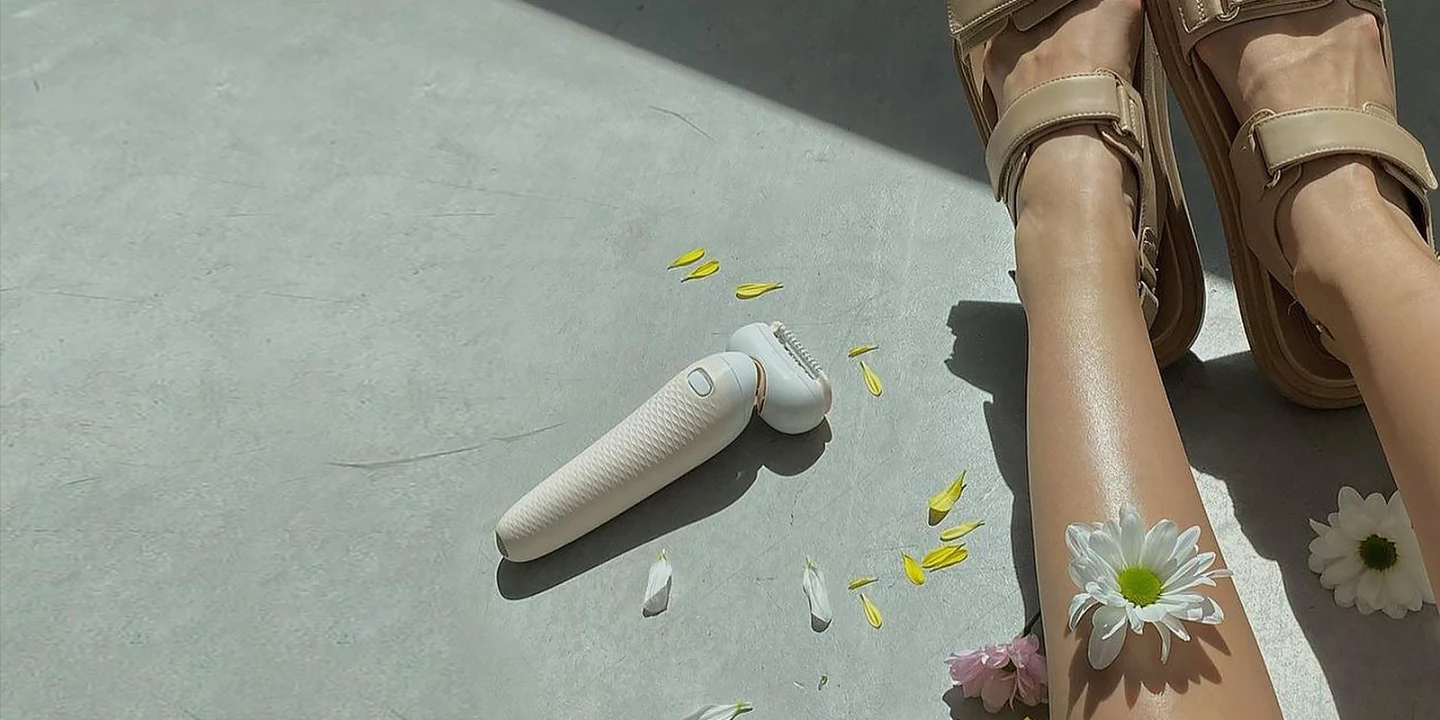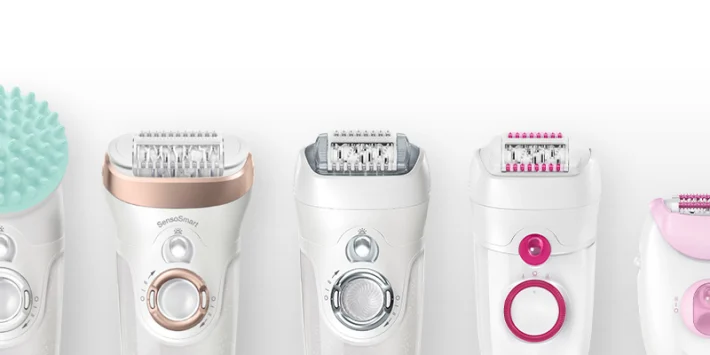Ingrown hair can be a nuisance, especially if your hair is thick and curly. And if not treated right, it can sometimes lead to infections. So, are you wondering if there any ingrown leg hair treatment or how to get rid of ingrown hair on face for women? If yes, then you are at the right spot. There are a few effective ways and remedies to get rid of that unwanted ingrown hair on your face and body.
Read below to know all about ingrown hair – from what is ingrown hair to how to remove ingrown hair.
What is ingrown hair?
An ingrown hair starts growing outward normally but then ends up curling under itself and continues growing inward under your skin instead. This mostly happens when a hair follicle is clogged with dead skin and gets trapped under the skin, leading to inflammation and irritation.
Thick, curly hair is more prone to becoming ingrown hair, especially in the pubic area. However, they're not limited to curly hair or the pubic region, and anyone can have them, anywhere on the skin – thanks to sweat, natural oil secretion or incorrect hair removal.
Ingrown hair resembles tiny red bumps like a pimple with white pus underneath the surface and is most likely spotted around eyebrows, underarms, bikini lines or other hair-removal spots.
Check out Braun Silk-épil Bikini Styler.
How to get rid of ingrown hair?
Here is a list of top 7 home remedies for ingrown hair:
1. Exfoliate, exfoliate, and exfoliate
Regular exfoliation is the key to beating ingrown hair. For best results, exfoliate once every week using a gentle glycolic cleanser. You can also use exfoliating creams, scrubs or products containing glycolic, salicylic, or lactic acid. These acids loosen the skin cells on the topmost layer and help treat and prevent ingrown hair. For the best recommendation on creams or scrubs, consult your dermatologist.
You can also use the face cleaning brush of Braun FaceSpa 851 that helps cleanse pores and exfoliate your skin gently yet deeply. Moreover, it is 100% waterproof and dermatologically tested – thus safe for daily use, even on sensitive skin. Check out the Braun Facial Epilator and cleansing brush system.
2. Use a dry brush
Brushing your skin with a dry brush is the harder version of exfoliation. It prevents ingrown hair by moving them out of way, as you brush through the skin to release any tucked-under ingrown hair. It also helps stimulate the pores and opens them up. However, since it is a bit harsh, stick to dry brushing your skin once every one to two weeks. If you have sensitive skin or are prone to redness, you can choose a toned-down version – dampened exfoliating mitt or skip the method altogether.
3. Switch to epilation
Opt for epilating your skin as your preferred method of hair removal because it removes hair follicles from the root and is less painful than waxing. It is quick, easy, and can be done comfortably at your home. Using a wet and dry epilator like Braun Silk-épil 9 that comes with different attachments, even for epilating the sensitive pubic area, is a more convenient option. The SensoSmart technology comes with a red-light indicator to ensure you apply right amount of pressure, thus making the epilator remove hair correctly. This reduces the chances of ingrown hair. Also, Its 40% wider head with long and deep micro-tweezers captures maximum hair in one stroke, saving you pain caused by multiple strokes.
Similarly, for face you can use the Braun FaceSpa 851 – a slim epilator head that provides ultimate precision. The extra slim head has 10 micro-openings to capture even the finest hair up to 0.02 mm from the root, giving smooth, hair-free skin for up to four weeks.
4. Use a smoothing scrub
Another good alternative to eliminate ingrown hair is using a smoothing scrub if not dry brushing. Go for a sugar- or salt-based scrub that's not too oily for your skin. Oily scrubs can clog the pores, thus increasing the development of ingrown hair. You can also choose fine-textured scrubs that contain the exfoliating acids mentioned above. It is best to scrub your body and around the bikini line once or twice every week to get rid of that ingrown hair. Remember, these scrubs may be too harsh for your facial skin, so it's best to stick to special scrubs meant for your face.
5. Avoid wearing skin-tight clothes
If you have ingrown hair in your pubic area or on your legs, it is a good idea to steer clear of skinny jeans or fancy underwear for a while. Lacy or embellished panties can irritate the skin and push the hair even more under the skin. Also, constant rubbing in skin-tight clothing worsens the situation. So, allow your skin to heal and breathe. Choosing loose bottom wear is one of the easiest home remedies for ingrown hair on the legs. Wearing cotton underwear is also a great ingrown hair remedy for the pubic area. Read our article on how to remove pubic hair and avoid ingrown pubic hair.
6. Pick a light-weight lotion or moisturizer
Your skin needs to stay hydrated after all that exfoliation and hair removal treatment. But it doesn’t mean you laden it with a heavy moisturiser. Heavy cream or oil-based lotions tend to clog your pores and will ruin the efforts you put in to save yourself from all that ingrown hair. It can aggravate the ingrown hair problem even more. So, apply a lightweight moisturiser that will allow your skin to breathe and hydrate.
7. Take a warm bath
Taking a warm shower or soaking the hands or legs affected with ingrown hair in warm water can help soothe the area. You can also try placing a warm towel (dip the towel in warm water and then squeeze out excess water) on the affected area for a couple of minutes and then repeat the process.
They say, "Prevention is better than cure" - so after treating ingrown hair and letting your skin heal, why not work towards preventing ingrown hair? Check out our article on reasons to exfoliate in order to prevent ingrown hair for more information.
How to get rid of ingrown pubic hair?
Here are some remedies to treat ingrown hair in the pubic area:
1. Stop removing the hair in the pubic area
Do not wax, pluck, tweeze, or shave the area until your skin has healed, and the ingrown hair disappears. Continuing with any of these hair removal methods while you have tiny bumps on your skin can aggravate the inflammation and irritation.
2. Apply warm compress
Placing warm compresses over the affected area can ease the discomfort. You can also use a wet washcloth or soft toothbrush to rub over the skin in circular motions.
3. Avoid scratching
The area might feel itchy due to the irritation but try avoiding the urge to scratch as it can cause more discomfort. It may even cause a severe skin infection.
4. Get a prescription
If you're experiencing a lot of redness, irritation, and inflammation due to the pubic ingrown hair, consult your dermatologist for a topical treatment like a cream or ointment that can reduce the discomfort.
Can epilation cause ingrown hair?
No! Epilation in itself is never the cause of ingrown hair. However, not following a proper skincare routine before epilation like exfoliating or having a warm shower can lead to ingrown hair. The key to avoid ingrown hair is to use a high-quality epilator and follow the right epilating techniques like epilating by gliding the epilator at right angle.
When do ingrown hair go away?
Although there is no fixed duration for how long do ingrown hair last, it all depends on how fast your skin heals. The key factors that determine the time frame for ingrown hair are your skin type and the intensity of the irritation it has suffered. If you disturb the affected area by scratching or digging to get out the ingrown hair, the more time it’ll take for your skin to heal.
When to see a professional?
Plucking ingrown hair can seem easy, thanks to the bunch of DIY solutions available on the internet. Using tweezers to pluck out the ingrown hair, squeezing the bumps to pop the ingrown hair, or digging into the skin to get rid of it, may seem harmless, but do carry a risk of infection. It is best to visit a dermatologist if you often get ingrown hair, as the professional is qualified to do the ingrown hair removal correctly or will suggest the right way for you to do it.
If you notice tiny bumps filled with pus that are even more painful and red or any painful swelling in the area, seek medical advice and get the infection treated by your doctor.
Takeaway
Ingrown hair isn't a serious problem and can be dealt with proper care and treatment. You can manage and prevent ingrown hair at home but there may be times when you might have to see a doctor. So, avoid self-treating extremely irritated ingrown hair or infections on your own and see a doctor when necessary.


